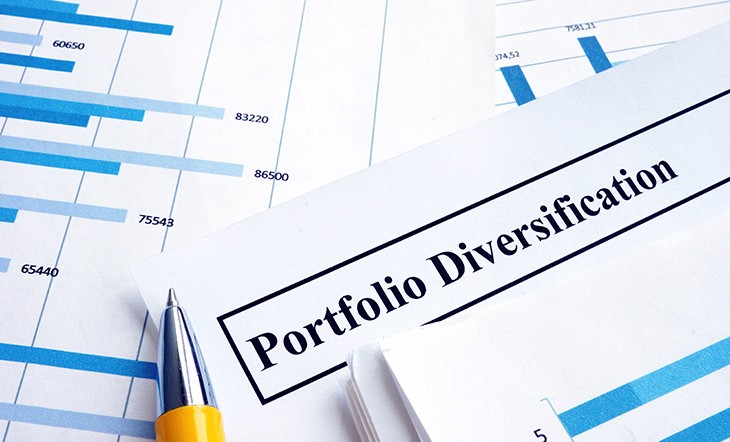5 Ways to Invest $100,000 for Long-Term Wealth

It is often said that with great wealth comes great responsibility. The possession of a significant sum of money is not merely a privilege. It is a commitment to utilize it wisely and prudently. If you are in possession of $100,000 or more, you have a unique opportunity and the chance to grow this wealth, ensuring not just your own financial stability but that of generations to come. However, the key lies not just in having the money but in making it work for you. This is where the art of investing comes into play. It offers you a pathway toward wealth creation that can lead to lasting financial security. However, the world of investments is multifaceted and requires careful consideration. Making the right choices is paramount. A well-informed investment strategy can pave the way for substantial long-term wealth and create a robust financial foundation that withstands the test of time.
Consult with a professional financial advisor on how to invest $100,000 in suitable investments that align with your long-term objectives and risk appetite. This article will shed light on the best ways to invest $100,000, focusing on long-term wealth accumulation. This can help you evaluate several investment options and harness the power of your money to secure your financial future.
Where would you invest $100,000 for long-term wealth?
1. Growth stocks
When considering the best ways to invest $100,000 for long-term wealth, investing in growth stocks is one of the most compelling options. Growth stocks represent companies that exhibit a remarkable ability to increase their revenue and earnings at a pace surpassing the industry average or the broader market. Opting for growth stocks can significantly enhance your portfolio's performance, enabling it to outshine the general stock market. These agile businesses not only expand faster than their counterparts but also offer resilience, helping your investments recover swiftly from economic downturns or market shocks.
Successful investing in growth stocks requires a strategic approach. You can begin by identifying strong, long-term market trends and spot the companies that are best positioned to capitalize on them. This foresight can allow you to invest in businesses with robust growth potential. You must also look for companies with competitive advantages. Such businesses are better equipped to withstand market fluctuations and ensure the sustainability of your investments. Further refining your selection to companies with large addressable markets is essential. These markets represent ample opportunities for expansion, which can be a crucial factor in ensuring the longevity of your investments.
Several sectors are experiencing exponential growth in the current times. E-commerce, propelled by the digital revolution, has transformed the way consumers shop, presenting immense opportunities for growth. Simultaneously, digital advertising and digital payments have also expanded rapidly, reshaping the financial ecosystem. Cloud computing is another cornerstone of modern technology and can offer vast potential for investment. There has also been a shift towards cord-cutting and streaming entertainment. The rise of remote work and the booming electric vehicle market may also offer compelling prospects for long-term growth.
While growth stocks can be an excellent addition to your portfolio, it is crucial to exercise prudence when investing in them. These businesses can offer high growth, but this growth may translate to increased volatility in your portfolio. Therefore, it may be wise to limit the portion of your holdings allocated to growth stocks to ensure a balanced and diversified investment approach. The specific amount you invest in these stocks should align with your risk appetite and investment time horizon. You can consult with a financial advisor to strike this balance and invest wisely in growth stocks.
2. Real estate
Real estate can be another asset to consider if you are wondering how to invest $100,000. Real estate can offer you a path to financial stability and growth. The allure of real estate lies in its unique ability to appreciate over time, making it a tangible and reliable asset in your investment portfolio. Real estate may offer several avenues to earn more money. For instance, you can consider property flipping or purchasing and renting out the place for consistent income. Property flipping involves buying homes, renovating or enhancing them, and selling them at a higher price. This helps you make a profit. Investing in rental properties can also provide a steady income stream through renting. This can help you cover the property's expenses and potentially yield a surplus.
3. Dividend stocks
Dividend stocks are shares in companies that regularly distribute earnings to shareholders. They come with several advantages, making them ideal for long-term investment. Dividend stocks can provide a great source of passive income. By investing in them, you get to position yourself to receive regular cash payments. This creates a stable income stream that can support you both in the present and the future. Moreover, the consistent inflow of funds not only offers financial security but also allows for a comfortable lifestyle, irrespective of market fluctuations.
Dividend stocks can be particularly appealing because of their lower level of risk compared to other investments. The companies that pay dividends tend to be well-established and financially sound, with a proven track record of stability. Their inherent stability offers a more secure investment environment for you and safeguards your capital to ensure a reliable income flow. Additionally, dividend-paying stocks provide the unique advantage of reinvestment. The dividends you receive can be reinvested to purchase more shares of the same stock or other investments. This accelerates your earnings, leading to substantial wealth growth in the long run. Furthermore, dividend stocks provide dual benefits by combining the potential for capital appreciation with regular distributions. As the value of the stock appreciates, your investment grows, augmenting your overall wealth. Simultaneously, the dividends received serve as a tangible return on your investment, enhancing your financial stability.
Dividend stocks can also act as a shield against inflation. The consistent dividends from these stocks can serve as a hedge, preserving your wealth and ensuring it keeps pace with the rising cost of living. By investing in dividend stocks, you get to secure a stable source of passive income. The combination of regular cash payments, reinvestment opportunities, stability, and inflation protection makes dividend stocks an indispensable asset for your portfolio for long-term financial prosperity.
SPONSORED WISERADVISOR
4. Mutual funds and exchange-traded funds (ETFs)
Mutual funds and exchange-traded funds (ETFs) are two more investment vehicles that can be considered when deciding where to invest 100k. Mutual funds pool your investment with that of numerous other small investors and invest the combined capital in the market. These funds are managed by a seasoned professional fund manager. These managers are adept at navigating the complex landscape of stocks, bonds, and various assets. Skilled fund managers conduct in-depth research and make strategic decisions on your behalf, ensuring your investment aligns with your financial goals and risk tolerance. This hands-on approach can potentially yield substantial growth, providing you with the prospect of building significant long-term wealth. Mutual funds also offer inherent diversification. When you invest in a mutual fund, you gain exposure to a broad array of assets. This helps you mitigate various risks that might come with investing in individual stocks or bonds. Diversification also shields against market fluctuations and enhances the stability of your investment portfolio.
Mutual funds cater to your specific needs and risk appetite. With a plethora of options available, you can choose funds tailored to your financial objectives, whether you prefer aggressive growth, income generation, or a balanced investment approach. Moreover, mutual funds allow you the flexibility to invest in lump sums or regular installments, accommodating your unique financial circumstances and investment preferences.
On the other hand, ETFs offer a different approach to wealth accumulation. These funds passively track the performance of specific indexes, providing you with instant exposure to entire asset classes. One of their significant advantages is the low expense ratios, ensuring that more of your money is invested in the market and not wasted in fees.
5. Bonds
Bonds function as loans that you provide to organizations, whether they are corporations, municipalities, or the government. By investing in bonds, you essentially lend your money and, in return, receive periodic interest payments. Bonds offer a unique advantage: their values generally fluctuate less than the prices of stocks, providing a stable foundation for your investment portfolio.
One approach to bond investment involves holding them until their maturity date. You collect regular interest payments, typically made twice a year during this period. These payments serve as a predictable and consistent income stream, offering financial stability in your investment endeavors. Moreover, bonds grant you the flexibility to sell them before their maturity date, potentially at a price higher than your initial investment, depending on market conditions. Bonds come in various forms, catering to different investor preferences and risk profiles. You can invest in corporate bonds issued by corporations. Keep in mind that these bonds offer higher interest rates compared to others. The second option is to invest in municipal bonds issued by municipalities to fund public projects like schools, hospitals, and infrastructure. Investing in municipal bonds may offer financial rewards while allowing you to contribute positively to your community. Treasury bonds are the third option. These are backed by the government and are considered extremely low-risk. They can provide a stable investment avenue and are suitable for risk-averse investors.
Investing in bonds carries several advantages. Bonds are relatively safe investments. Their values experience lower fluctuations compared to stocks, offering stability and security to your investment portfolio. They can offer a steady stream of income with fixed interest payments, paid to you twice a year. This predictability allows you to plan your finances effectively. Bonds offer diversification to your investment portfolio. While historically, stocks have outperformed bonds over the long term, a balanced mix of both assets can reduce financial risk. You can invest a portion of your funds in bonds as you age. This can help you prioritize safety over risk.
Other important questions about how to invest $100,000
1. What to do before you invest $100,000?
Before investing $100,000, it is crucial to lay a solid financial foundation. Firstly, prioritize paying off high-interest debt. High-interest debts, such as loans, credit card balances, etc., can accumulate rapidly, eroding your wealth. By clearing these debts, you eliminate financial burdens and free up funds for future investments. Secondly, focus on building an emergency reserve. An emergency fund is a financial safety net that can provide you with a financial cushion in case of unexpected expenses like medical emergencies or job loss. It is recommended to have at least six to twelve months' worth of living expenses set aside in a liquid and easily accessible account. This fund ensures you don't have to dip into your investments or incur additional debts during unforeseen circumstances, allowing your assets to grow uninterrupted.
2. How to invest 100k to make $1 million?
There is no guaranteed method to turn $100,000 into $1 million. Investment success depends on various factors, including market conditions, economic trends, and individual risk tolerance. However, there are strategies and principles that can increase your chances of growing your wealth. Diversification is key to balance out the overall performance of your portfolio. Patience is another vital element. Investments generally need time to grow, and the market can be unpredictable in the short term. Avoiding impulsive decisions and sticking to a well-thought-out, long-term investment plan can be crucial in achieving your financial goals. Regular monitoring of your investments is also critical. Rebalancing, which involves adjusting your asset allocation, can be necessary to maintain your desired risk level. Moreover, consider seeking advice from a certified financial planner or advisor. They can help you create a customized investment strategy that is ideal for your financial situation, goals, and risk tolerance.
To conclude
The responsibility that comes with substantial wealth may seem overwhelming, but with it comes the opportunity to craft a secure and prosperous future. There is a diverse array of investment options available that can help you with wealth accumulation and long-term financial stability. While there is no magic formula to invest $100,000 to guarantee success, the knowledge, choices, and strategies discussed above can offer you a roadmap. Remember to stay informed, be patient, and seek professional advice to invest with confidence. It is also essential to understand that your financial journey is unique, and it may not be prudent to follow or mimic your peers. Thoughtful planning and prudent decisions are the foundation of a robust investment strategy.
Use the free advisor match service to find the perfect financial expert who can help you invest $100,000 as per your goals. Answer a few questions about your financial needs, and get matched with 1 to 3 financial advisors who can guide you on your financial journey.








.jpg)













.jpg)





.jpg)


.jpg)


.jpg)















.jpg)





.jpg)




.jpg)


.jpg)






.jpg)

.jpg)






.jpg)




.jpg)

.jpg)



.jpg)



.jpg)


.png)
.jpg)
.jpg)





.jpg)
.jpg)


.jpg)


.jpg)

.jpg)

.jpg)
.jpg)
.jpg)

.jpg)

.jpg)




.jpg)


.jpg)

.jpg)


.jpg)
.jpg)
.jpg)
.jpg)
.jpg)

.jpg)




.jpg)
.jpg)


.jpg)
.jpg)
.jpg)
.jpg)

.jpg)
.jpg)















.jpg)

.jpg)




.jpg)

.jpg)











.jpg)



